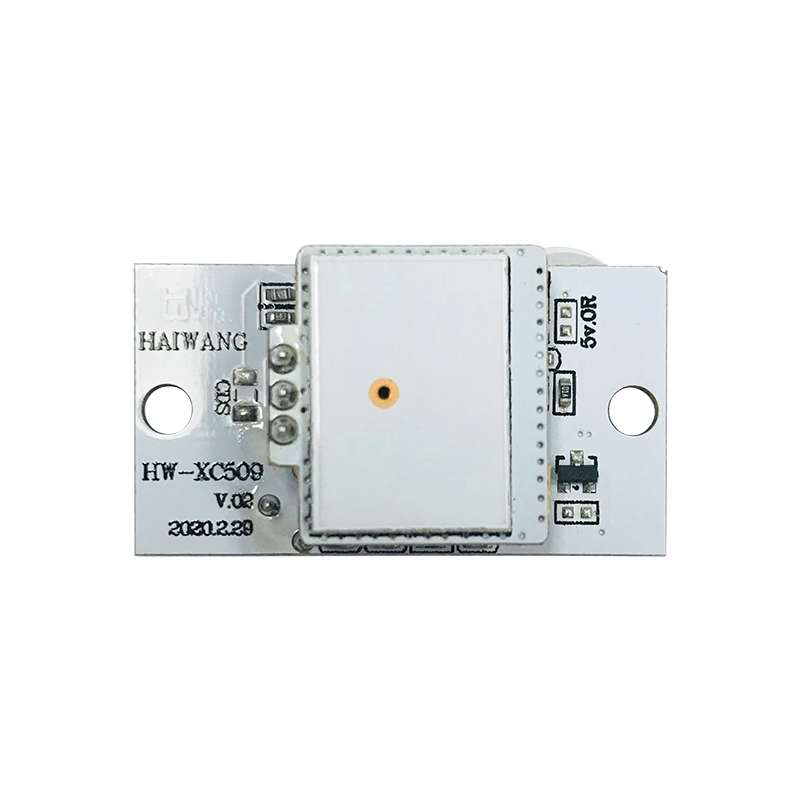 1004,West-CBD,No.139 Binhe Rd,Futian District,Shenzhen, China Post Code:518048
1004,West-CBD,No.139 Binhe Rd,Futian District,Shenzhen, China Post Code:518048
 +86-18682200597
+86-18682200597
 sales@szhaiwang.com
sales@szhaiwang.com
 1004,West-CBD,No.139 Binhe Rd,Futian District,Shenzhen, China Post Code:518048
1004,West-CBD,No.139 Binhe Rd,Futian District,Shenzhen, China Post Code:518048
 +86-18682200597
+86-18682200597
 sales@szhaiwang.com
sales@szhaiwang.com
source:Industry News release time:2022-01-21 Hits: Popular:Infrared sensing module

The photoelectric switch uses the light source as the medium and applies the photoelectric effect. When the light source is shielded by the object or reflected, radiated and shielded, the amount of light received changes to detect the presence, size, and brightness of the object, and output signals to the contact and non-contact. . Photoelectric switches include several types. They do not have a light source and use the change of light emitted by the object to be tested for detection; use natural light to irradiate the photoelectric switch, and the object shields the change of natural light; the photoelectric switch itself has a light source and emits The light source detects the amount of change in the reflected, absorbed, and transmitted light of the detected object. Commonly used light sources are ultraviolet light, visible light, infrared light and other wavelength bands. The types of light sources include bulbs, LEDs, laser tubes, etc.; output signals include switching or analog signals and communication data information.
Features of photoelectric switch:
1. Long detection distance: Compared with inductive proximity switches, a long detection distance can be obtained. For example, the detection distance of the through-beam switch can reach tens of meters, and the reflection has been from a few centimeters to several meters. Because it is a non-contact detection, It does not damage the measured object, nor is it affected by it.
2. Wide range of detection objects: Because the detection is based on the reflection and light transmission of the detection object, almost all metals, even glass, rubber, wood, liquid, gas, etc. can be detected.
3. Fast response speed: The detection medium itself is high-speed, because it contains almost no mechanical action, so a very high detection speed can be obtained.
4. High resolution: Because the light travels in a straight line and the wavelength is short, the resolution is high, and it is suitable for small objects and high-precision position detection.
5. Easy to obtain regular detection area: the lens and other optical systems can be used to easily condense, diffuse and refraction. Corresponding to different detection objects and different use environments, products with a certain detection area can be appropriately selected.
6. Not affected by magnetic field and vibration: detection switches are generally installed in places with strong magnetic fields and vibrations. In essence, photoelectric switches are rarely affected by them, so they can operate reliably
Features of radio frequency sensors
has the following characteristics in industrial production applications:
1. Long detection distance
If the detection distance of 10m or more is reserved in the through-beam type, it can realize that other detection methods (magnetic, ultrasonic, etc.) cannot detect long distances.
2, there are few restrictions on detecting objects
As the detection principle is based on the shading and reflection caused by the detection object, unlike the radio frequency sensor, which limits the detection object to metal, it can detect almost all objects such as glass, plastic, wood, and liquid.
3, short response time
The light itself is high-speed, and the circuit of the sensor is composed of electronic parts, so mechanical working time is not included, and the response time is very short.
4, high resolution
High-resolution design technology can be used to concentrate the projected light beam on a small spot, or to form a special light-receiving optical system to achieve high resolution. It can also detect small objects and high-precision position detection.
5, non-contact detection can be realized
The detection can be achieved without mechanically touching the detection object, so it will not cause damage to the detection object and the sensor. Therefore, the sensor can be used for a long time.
6. Color discrimination can be realized
The reflectance and absorptivity of the light formed by the detection object differ according to the combination of the wavelength of the light projected and the color of the detection object. Using this property, the color of the detected object can be detected.
7, easy to adjust
In the type of projected visible light, the projected light beam is visible to the eyes, which is convenient for adjusting the position of the detection object.
Four major differences between fiber optic sensors and radio frequency sensors
The first point is that the working principles of RF sensors and fiber optic sensors are different
First of all, from the working principle of the two, first of all, let's talk about the radio frequency sensor. It works according to the principle of photoelectric effect, that is to say, when light is irradiated on the radio frequency sensor made of semiconductor, it will emit photoelectrons. , Can convert light energy into electrical energy. For example, photoresistors, photodiodes, and phototransistors, which are often used in light control occasions, all work according to this effect. The optical fiber sensor works by the principle of total reflection of light. The principle of total reflection of light has been learned in middle school physics. For example, Snell's law of light refraction and reflection clearly expresses the principle of light reflection with mathematical relations. . Therefore, we can use the light transmission characteristics of the optical fiber to convert the measured light into a change in light characteristics, such as changing the frequency, wavelength, intensity, and phase of the light.
The second point is that the radio frequency sensor and the fiber optic sensor are made of different materials
Radio frequency sensors are mainly made of semiconductor materials or metal materials with photoelectric effect. For example, photodiodes and phototransistors are generally made of silicon or germanium materials, and photoresistors are made of materials such as cadmium sulfide or indium antimonide. Production; The optical fiber sensor is composed of glass fiber (mainly made of quartz glass) with high light transmittance, and the composition is relatively single.
The third point is that the structure of RF sensors and fiber optic sensors is different
The radio frequency sensor is relatively simple. For example, a photodiode is composed of pins, housing, die, and glass condenser. The structure of fiber optic sensors is relatively complicated, and in addition to optical fibers, there are some complex peripherals as auxiliary controls.
The fourth point is that the measurement ranges of RF sensors and fiber optic sensors are different
The measurement range of the radio frequency sensor is relatively small, generally including light intensity, illuminance, speed and strain displacement, etc.; while the measurement range of the optical fiber sensor is relatively wide, and it can measure more than 70 physical quantities, such as pressure, vibration, speed, current, Temperature, flow, magnetic field, etc., so the future development of optical fiber sensors has a huge potential, and it can be said that the latecomers dominate.
Read recommendations:
The working principle of thermal resistance temperature sensor.Moving object detection module direct
NTC introduces MPLS into the access layer.Radar Microwave Induction Sensor Switch
Popular Recommended Products
PIR Lens 8102-4
2021-12-09PIR Lens 8120
2021-12-09PIR Lens 8605-3
2021-12-09RX-50
2021-12-09PIR Lens 7708-10
2021-12-09HW-MS01 microwave sensor module
2021-12-07PIR Lens 8034
2021-12-09PIR Lens 8140
2021-12-09PND103F3950FTP706 NTC Thermistor 10K 1% 3950
2021-11-27PIR Lens 8308-6
2021-12-09HW-F1800-1 Fresnel solar lens Focal length 1800mm
2024-04-11NTC works as follows.Mini PIR Sensor Vendor
2022-06-17NTC thermistor performance test process.LDR sensor price
2022-06-13NTC temperature sensor's performance medium.Smart Human Body Infrared Sensor
2023-06-0810K 100K Small Appliance Circuit Board NTC Thermistor Probe
2022-09-16NTC temperature sensor
2022-11-26NTC temperature sensor for electric heating floor
2022-12-02NTC thermistor temperature sensor suitable for motor
2023-02-09Customizable insulation, thermal conductivity, waterproof temperature sensing NTC temperature sensor
2022-09-20NTC temperature sensor for fruit tree seedling cultivation and irrigation equipment
2023-09-21What is an NTC thermistor?
2022-05-18
szhaiwang4@hotmail.com
+86-18682200597
sales@szhaiwang.com